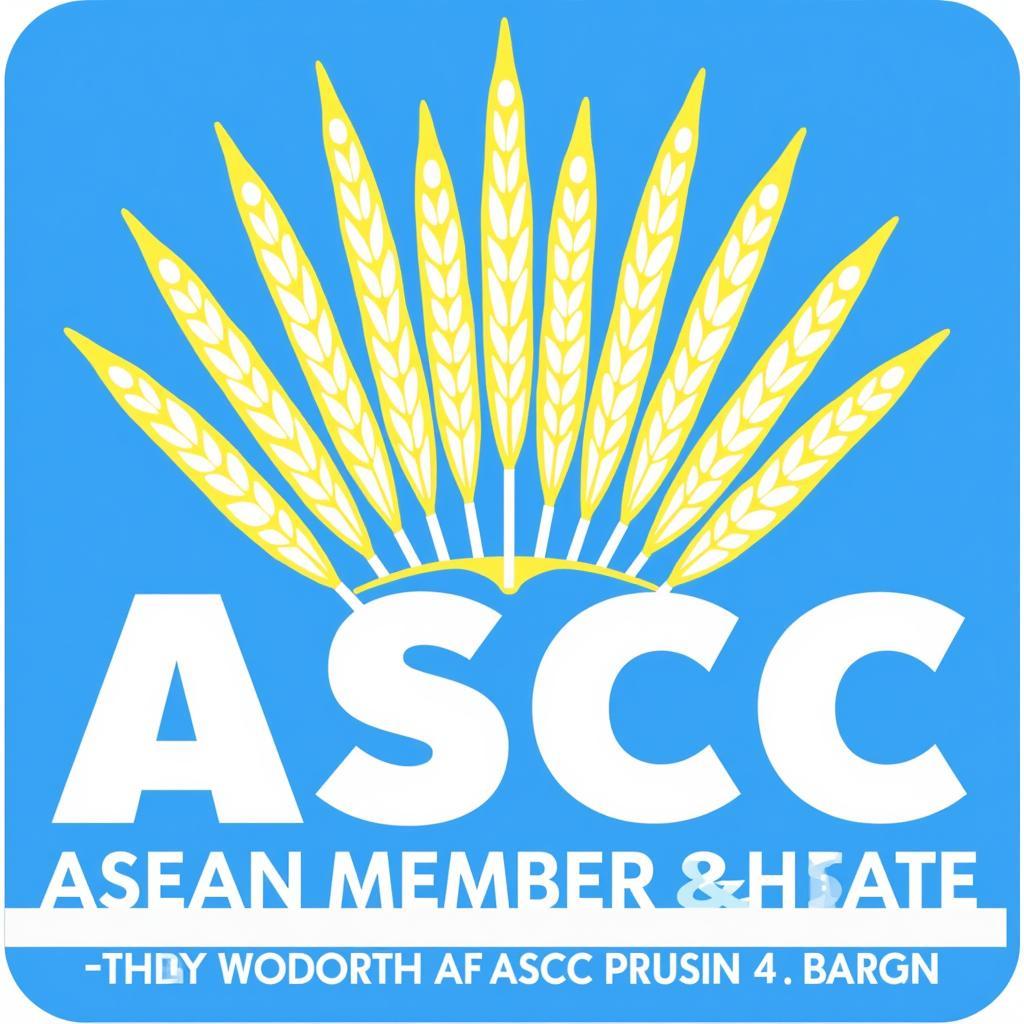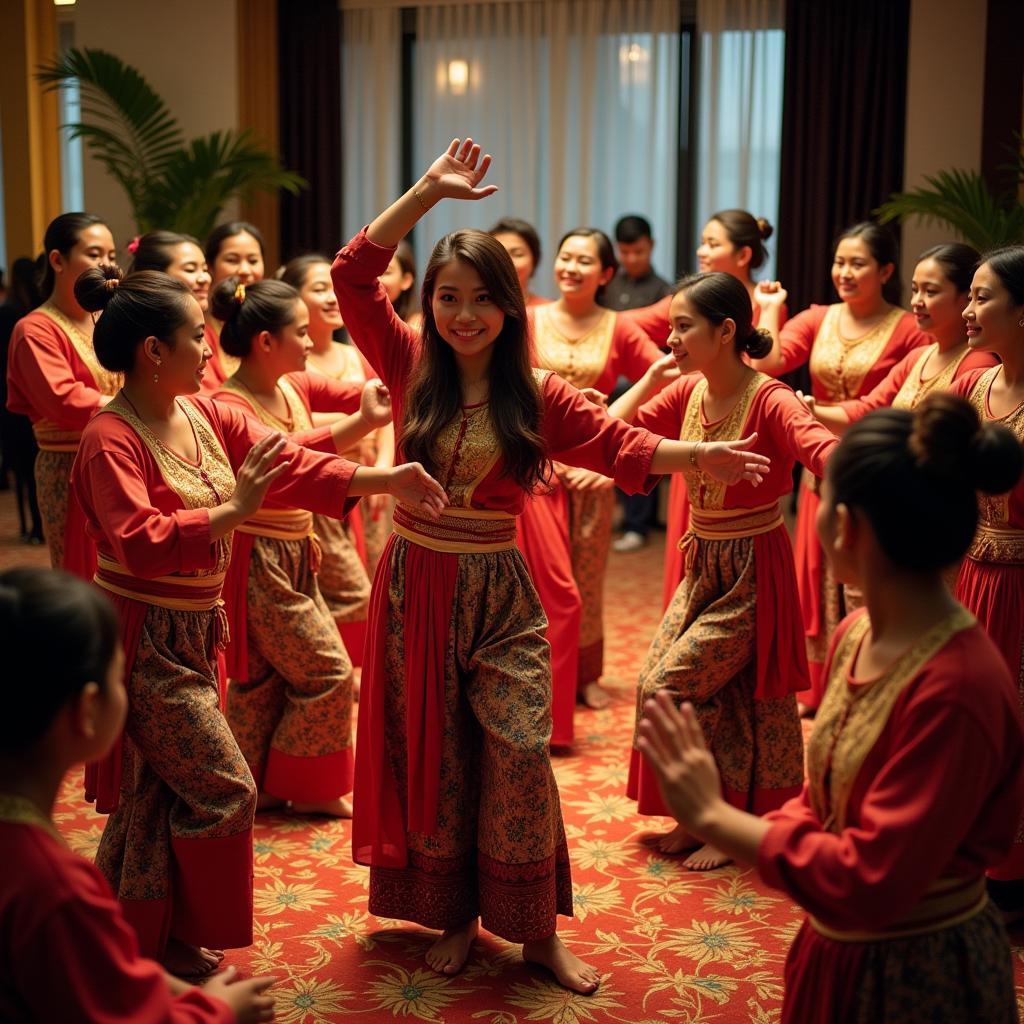The establishment of the ASCC, or ASEAN Socio-Cultural Community, marked a pivotal step in the journey of ASEAN integration. But what exactly is the ASCC, and what purpose does it serve within the broader ASEAN framework? This article delves into the core objectives behind the formation of this vital pillar, exploring its significance in nurturing a shared ASEAN identity and fostering unity among its diverse member states.
 ASEAN Socio-Cultural Community logo
ASEAN Socio-Cultural Community logo
Understanding the ASCC’s Role: Beyond Economic Cooperation
While ASEAN is widely recognized for its economic initiatives, the ASCC underscores the organization’s commitment to a more holistic approach to regional integration. It acknowledges that true unity extends beyond economic partnerships, encompassing social and cultural dimensions as well. The ASCC aims to build a resilient and dynamic ASEAN community by:
- Promoting cultural exchange and understanding: Through collaborations in education, arts, and heritage preservation, the ASCC encourages greater appreciation for the rich cultural tapestry that binds Southeast Asia.
- Empowering human potential: Recognizing that people are ASEAN’s most valuable resource, the ASCC prioritizes initiatives focused on education, healthcare, social welfare, and youth development.
- Strengthening social fabric and harmony: The ASCC works towards fostering a sense of belonging and shared identity among ASEAN citizens, promoting tolerance, understanding, and respect for diversity.
Key Focus Areas of the ASCC
The ASCC’s efforts are channeled through a comprehensive Blueprint, outlining strategic plans and initiatives across various sectors. Some of the key focus areas include:
- Education: Enhancing regional cooperation in education, promoting student and academic exchanges, and developing a skilled and adaptable workforce.
- Culture and Arts: Preserving and promoting ASEAN’s rich cultural heritage, facilitating cultural exchanges, and supporting the development of the creative industries.
- Social Welfare and Development: Addressing social issues such as poverty, inequality, and disability, and promoting social protection and inclusion for all ASEAN citizens.
- Health: Strengthening regional cooperation in public health, addressing common health challenges, and improving access to quality healthcare services.
- Information and Media: Leveraging the power of information and media to promote ASEAN awareness, understanding, and engagement.
 People participating in ASCC cultural exchange program
People participating in ASCC cultural exchange program
The Impact of the ASCC: Building a People-Oriented ASEAN
The ASCC has played a crucial role in fostering a sense of community and shared identity among the people of Southeast Asia. Through its various programs and initiatives, the ASCC has:
- Enhanced people-to-people connectivity: Facilitating greater interaction and collaboration among ASEAN citizens through educational exchanges, cultural programs, and youth camps.
- Preserved and promoted cultural heritage: Supporting the preservation of traditional arts, crafts, and cultural practices, ensuring their transmission to future generations.
- Empowered vulnerable groups: Implementing programs that promote social inclusion, gender equality, and the rights of persons with disabilities.
- Strengthened regional cooperation in health and education: Facilitating the sharing of best practices, knowledge, and resources to address common challenges in these sectors.
Looking Ahead: The ASCC’s Vision for a Vibrant and Inclusive Future
The ASCC continues to evolve, adapting to the changing needs and aspirations of the ASEAN community. Moving forward, the ASCC will focus on:
- Harnessing the potential of digital technologies: To bridge the digital divide, promote digital literacy, and leverage technology for social good.
- Strengthening social resilience: By addressing emerging challenges such as climate change, disaster risk reduction, and cybersecurity.
- Promoting ASEAN citizenship: Cultivating a sense of belonging and shared identity among ASEAN citizens, fostering active participation in the regional integration process.
The ASCC represents a fundamental pillar in ASEAN’s vision for a peaceful, prosperous, and people-centered community. By fostering greater understanding, cooperation, and solidarity among its people, the ASCC paves the way for a more integrated, harmonious, and resilient Southeast Asia.
FAQ
1. What is the difference between the ASCC and other ASEAN pillars?
While the other two pillars, the ASEAN Economic Community (AEC) and the ASEAN Political-Security Community (APSC), focus on economic integration and political-security cooperation respectively, the ASCC addresses the social and cultural dimensions of integration, aiming to build a people-oriented and socially responsible ASEAN.
2. How does the ASCC benefit ordinary citizens?
The ASCC directly impacts the lives of ASEAN citizens by promoting access to quality education and healthcare, preserving cultural heritage, creating opportunities for cultural exchange, and addressing social issues such as poverty, inequality, and discrimination.
3. How can I get involved in ASCC activities?
There are many ways to get involved, from participating in youth exchanges and cultural programs to volunteering for ASCC-related initiatives. Check the ASEAN website and your national ASEAN focal point for opportunities.
4. What is the future direction of the ASCC?
The ASCC is committed to building a more inclusive, resilient, and people-centered ASEAN. This includes leveraging technology for social good, addressing emerging challenges such as climate change and cybersecurity, and promoting active citizenship among ASEAN people.
5. Where can I find more information about the ASCC?
Visit the official ASEAN website or the website of your national ASEAN focal point for more detailed information about the ASCC, its programs, and initiatives.
Need support? Contact us 24/7:
Phone: 0369020373
Email: [email protected]
Address: Thon Ngoc Lien, Hiep Hoa, Bac Giang, Vietnam.

